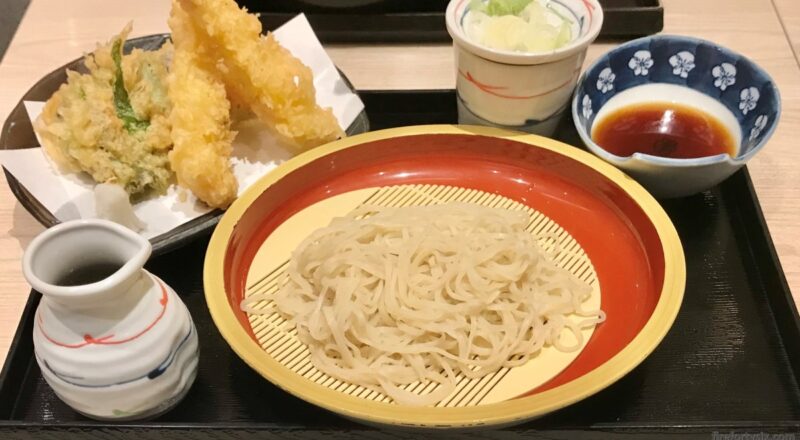I think it’s a well established fact by now that The Wife is obsessed over yuzu. What may not be as obvious is my love for soba, the number one choice when it comes to Japanese noodles. Yes, even higher than ramen, which, admittedly, comes in at a very close second.
So when we heard about the limited seasonal offering of freshly-made yuzu soba at Shimbashi Soba, it was inevitable that we’d find our way there.
What was surprising though, was how long it took us to finally get to Paragon shopping centre. It was on both of our to-do lists, but we procrastinated and procrastinated until we realised that 28 Feb was the very last day that it would be available.
The deadline isn’t quite that absolute, since they probably put it back on the menu every year. But missing the current season would mean that we’d have to wait for another long journey around the sun. Even a cold and rainy day didn’t stop us from heading down to Orchard Road.
Whenever we pass by Shimbashi Soba around lunch time, there always seems to be a long and snaking queue. Thankfully, on that wet Tuesday evening, it was relatively empty and we were seated immediately.
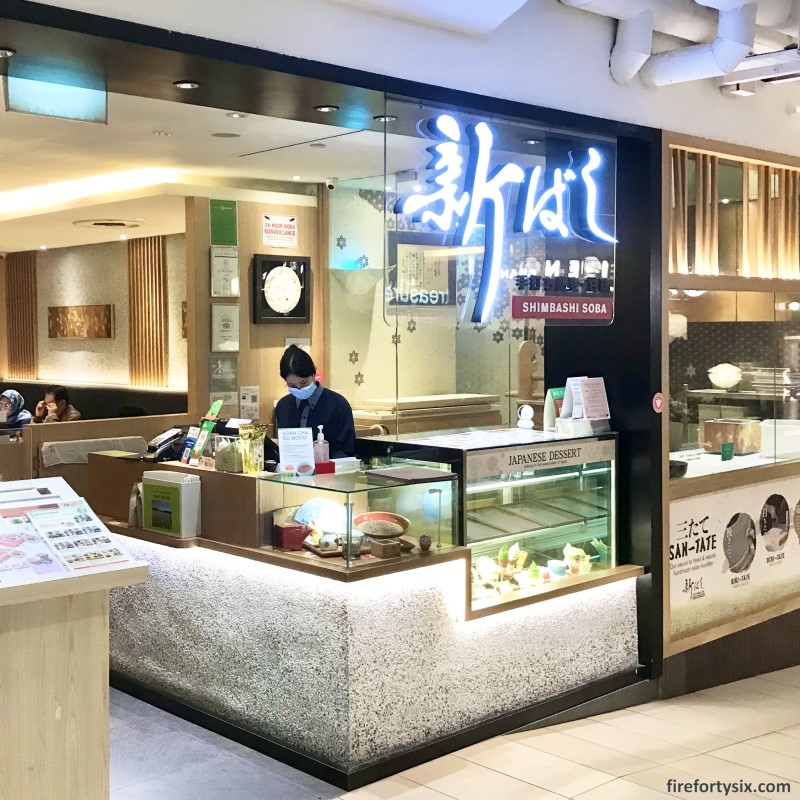
It’s been a while since we last ate at Shimbashi, so we flipped through the menu to remind ourselves of their offering. But there was no doubt whatsoever as to what we were going to order.
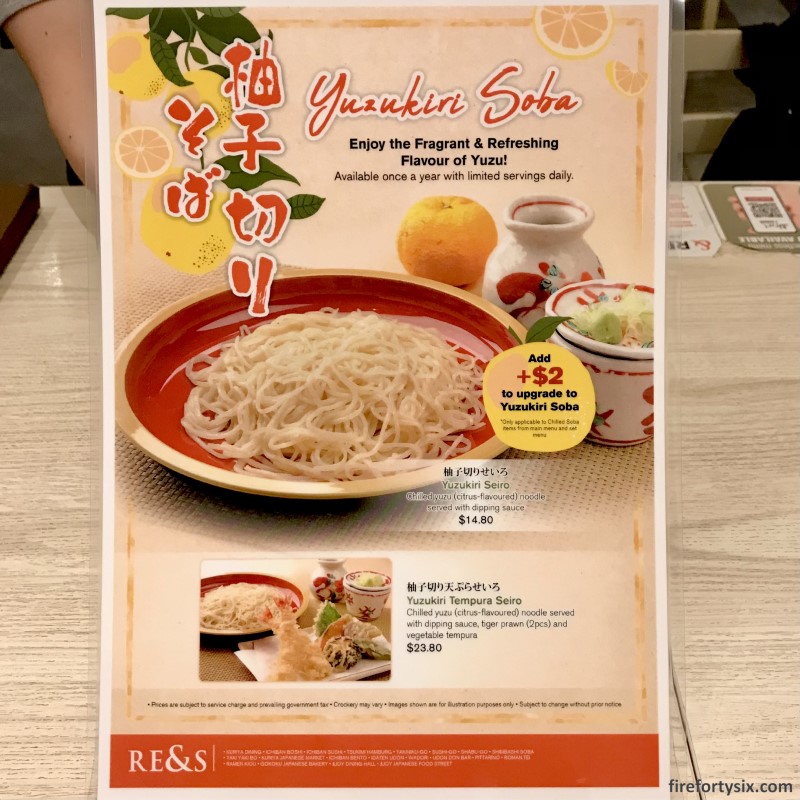
Upsizing to the recommended Yuzukiri Tempura Seiro set (S$23.80) was a no-brainer for The Wife. The basic chilled yuzu soba set costs S$14.80 and an additional S$9 nets her two tempura prawns plus eggplant, pumpkin, shitake mushroom and a pretty shiso leaf.
What caught my eye was the option to order any other chilled soba set on the menu and top up S$2 to upgrade to the yuzu soba. It was ideal weather for some hot soup, and I decided to go with the Duck Tsukemen Seiro (S$22.80). More commonly known as kamo seiro in Japan, it’s one of my favourite ways to eat soba.

While waiting for our food, we ordered some hot hojicha to warm up our bodies. It was a quiet evening, and the restaurant was relatively empty. Partly due to the rain, but most likely due to the lull period in between meal service.
To our left was a table of aged Indonesian tourists, who likely were in Singapore for medical appointments or some serious shopping, or perhaps even both. Even after numerous sightings, I never cease to be impressed by the over-the-top voluminous hairdos of older Indonesian ladies.
To our right was a young-ish Japanese couple having steaming hot bowls of kitsune soba, another one of my preferred choices. Whenever we eat at Japanese restaurants in Singapore, it’s always reassuring to see Japanese customers having their meals there too.
The tempura set was the first to arrive, with the cold yuzu soba served on top of a plastic mat made to resemble bamboo. It would have been a nice touch if real bamboo was used instead, like those in proper soba-yas in Japan.
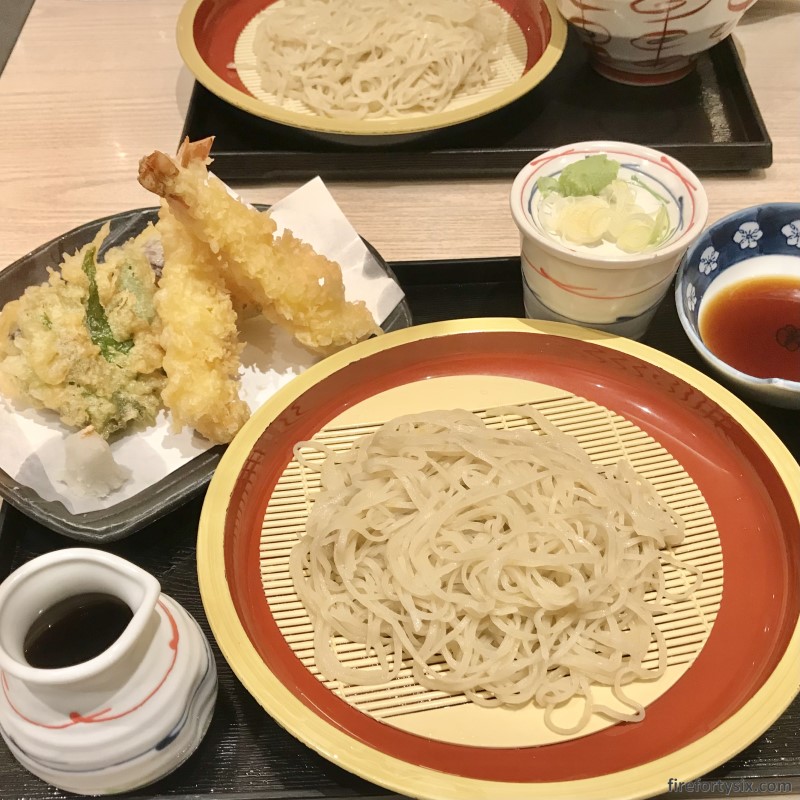
It came with the usual suspects of the mentsuyu dipping sauce, thinly sliced negi and a blob of wasabi, or more likely, grated horseradish dyed green. The soba itself was closer to the colour of dried straw rather than the greyish hue of normal soba, and didn’t have the bright yellow colour of its citrus namesake.
A closer inspection of the individual strands revealed flecks of yuzu peel, but we really had to squint and stare to make them out. But then again, yuzu peel has a robust flavour and a little bit goes a long way.
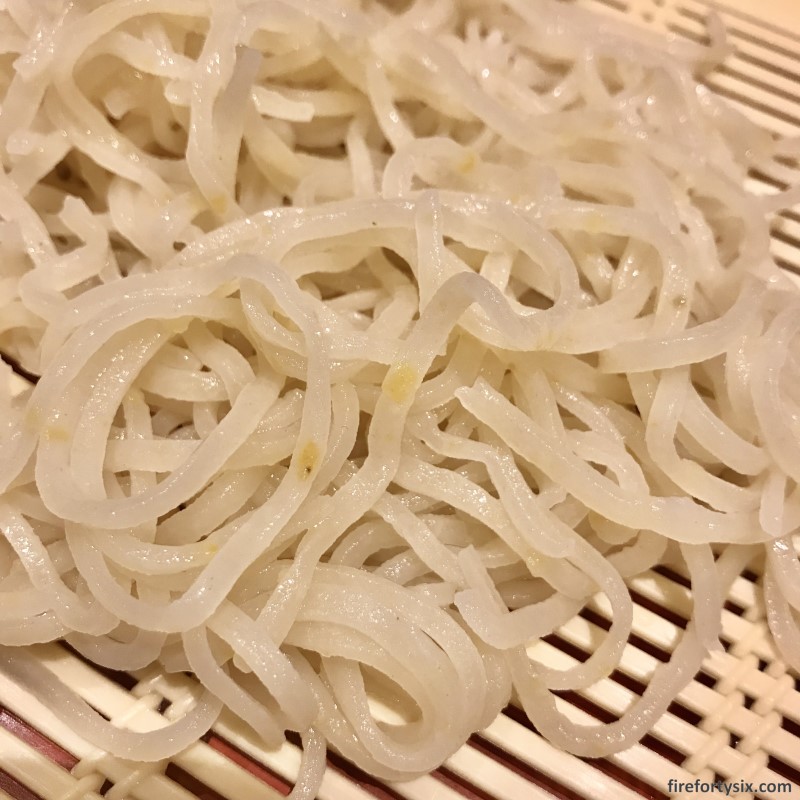
I lifted up a few strands of the noodle and tried it without any accoutrements or sauce. It had a nice, chewy texture and a citrus note which was surprisingly light. The yuzu-ness of the soba was very understated, and frankly, a bit disappointing.
For the next bite, I mixed in some negi into the mentsuyu, picked up a small blob of wasabi and placed it on top of the soba. Then I picked it up with my chopsticks and delicately dunked it into the sauce for the briefest of moments, before violently slurping it into my mouth.
The yuzu flavour was much more prominent this time, and closer to what I was expecting. The Wife also had her first mouthful, and we both agreed that it was very oishii, definitely worth making the trip downtown to try it.
We weren’t expecting much from the accompanying tempura, but they exceeded our expectations. The prawns were fresh and juicy, and the vegetables managed to retain a pleasant bite and were not overcooked. The batter was light yet crunchy, and more importantly, stayed crunchy throughout the meal, something which doesn’t always happen in humid Singapore.
The kamo seiro arrived soon after, with the soba served the same way on a faux bamboo mat. The duck broth was served on the side, chock full of duck breast, enoki mushrooms, Chinese cabbage, sugar snap peas, fried bean curd and a half-boiled onsen egg.
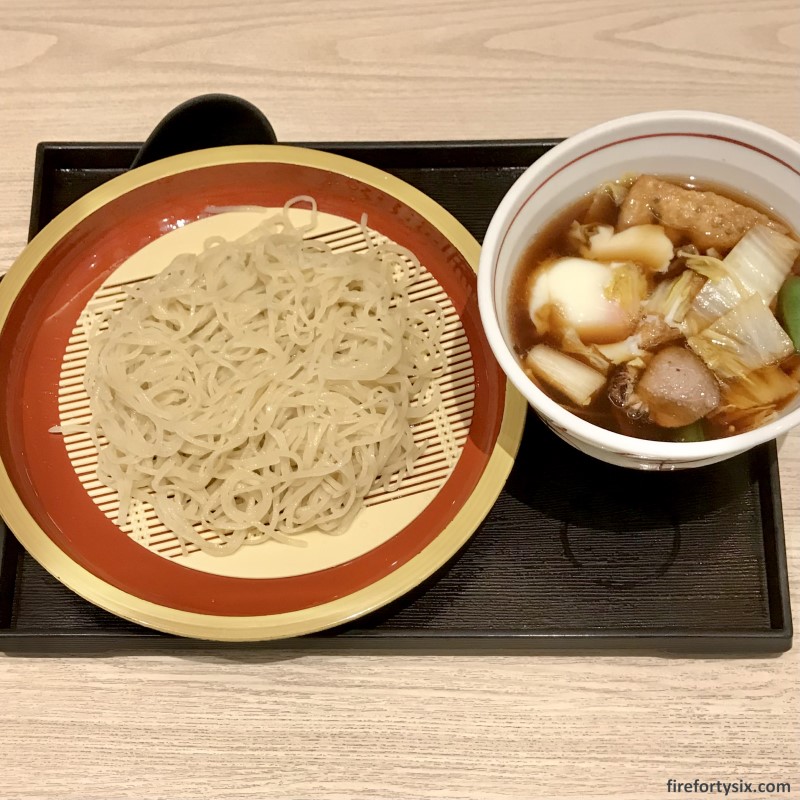
Similar to its counterparts in Japan, the broth was heavily seasoned and not meant to be drunk on its own. Instead, you’re supposed to quickly dip the soba into it and then swiftly transport it to your mouth to be slurped enthusiastically.
This time, the yuzu-ness of the soba was masked by the powerful broth. It was still discernable, but definitely not as tasty. Normal buckwheat noodles would have paired better. After all, it was the default choice on the menu, before I opted for the switch.
It didn’t take us long to finish slurping our respective plates of yuzu soba. We still had spare stomach capacity and ordered another portion of yuzu soba to share, this time on its own without any tempura.
Our waitress saw that we still had decent amounts of broth and dipping sauce left, and suggested that we simply top up with only the noodles and no dipping sauce or accompaniments. So, instead of an additional S$14.80, we’d only have to pay S$10 more. It was decent of her to proactively make the suggestion, and we thanked her for it.
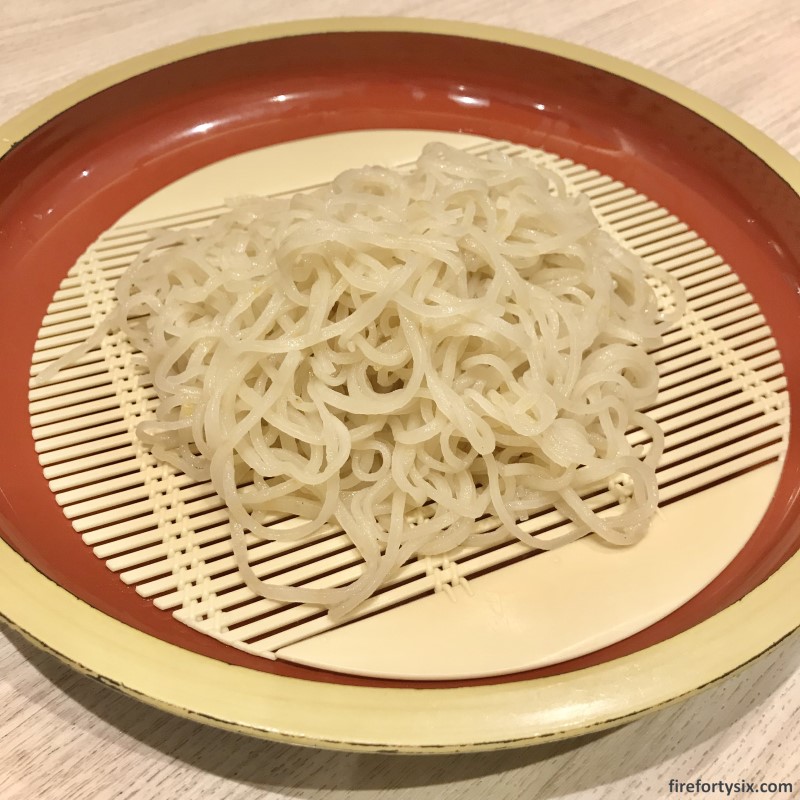
When we finished the third plate, we were comfortably full. To finish off the meal, we requested for the soba-yu (the water that the soba was cooked in) to be served. It came in a custom-made dispenser and we poured the starchy water into the leftover mentsuyu to make a nice and comforting soup.
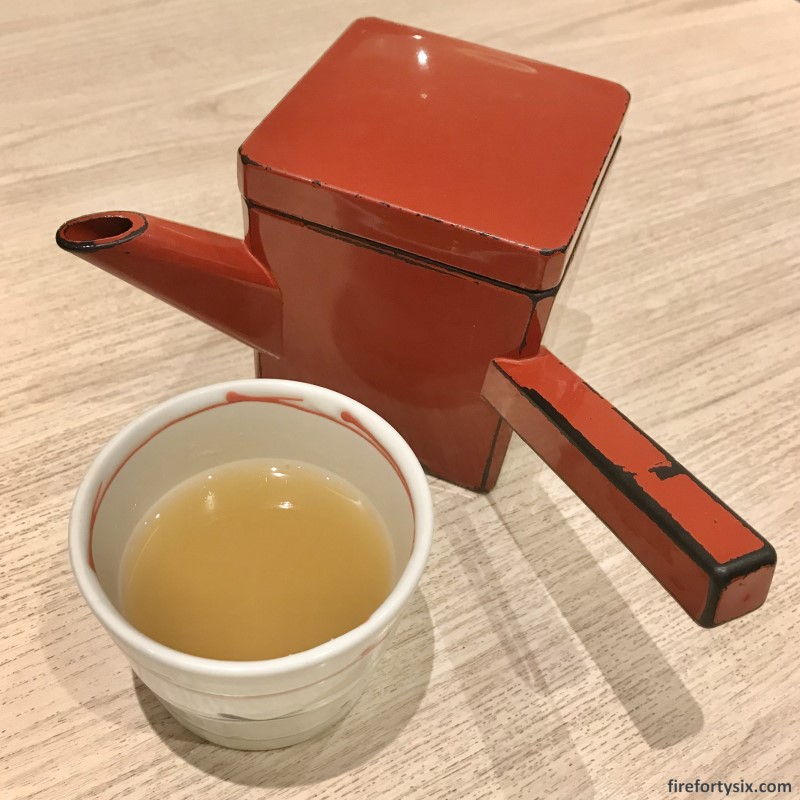
Before we left to pay the bill, we asked our waitress if it was the last day that the yuzu soba would be on the menu. We were hoping that they might decide to extend it for perhaps a few more weeks, so that we could come back again. Unfortunately, she confirmed that it was indeed the very last day.
Well, at least we managed to catch the window and got to try it at least once. Next year, when it’s back on menu, we definitely need to remember not to cut it so close and make a note to catch it early in the season.
